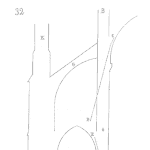
It has been said that beliefs come first, and we then find supporting facts for them second. Can we reduce this belief bias? Can we improve our decision making? [Read more…]
Your Reliability Engineering Professional Development Site
Find all articles across all article series listed in reverse chronological order.
by Perry Parendo Leave a Comment

It has been said that beliefs come first, and we then find supporting facts for them second. Can we reduce this belief bias? Can we improve our decision making? [Read more…]
by Gina Tabasso Leave a Comment

By Guest Blogger Wesley Suplit, product manager, SDMyers
After my first year in college, I discovered my favorite curriculum – economics. This surprises my friends and family because that discipline is known for its dry content and difficult math concepts. However, I had a completely different and inspiring experience. The course, and, really, my professor, opened my eyes to the beauty of observing how people make decisions.
What rocked my world was how simple economics could be. Conclusions could be inferred simply by observing phenomena and then performing thought experiments related to the observations. The goal of a thought experiment is to explore the potential consequences of the principle in question. Surprisingly, no mathematical formulas or complex equations were needed. [Read more…]
by Alex Williams Leave a Comment

According to the Institute of Asset Management, an asset management strategy is a “long-term optimized approach to management of the assets, derived from, and consistent with, the organizational strategic plan and the asset management policy.” Stated differently, an asset management strategy is a high-level but very important document that guides asset management activities within an organization.

Coronavirus seems to be spreading quicker than previous pandemic potential viruses, i.e., H5N1, H7N1, SARS, Ebola, MERS, etc. Could this be the long awaited/anticipated threat realization, or is it becoming a media driven phenomenon? Needless to say, planners should be implementing some assessment analysis regarding the potential for impacting business operations. Here is a brief look back at one of my articles from 2006, entitled, “Pre-Pandemic Planning: Business Continuity Perspectives“, when Bird Flu (H5N1) was the hot topic:
The business community is “not adequately prepared” for a possible avian flu pandemic, says Secretary of Health & Human Services Michael Leavitt. As of July 24, 2006, there have been 231 confirmed cases in humans resulting in 133 deaths (a mortality rate of 57%). The virus has spread to 33 countries through wild migratory birds that have now infected domestic poultry (source World Organization for Animal Health). [Read more…]
by James Reyes-Picknell Leave a Comment

Reliability Centered Maintenance methods compliant with the SAE standard JA-1011 (“Evaluation Criteria for RCM Processes”) all have common features – they must, or they won’t comply with the standard. Those requirements are “minimum” requirements, as they are with any standard. RCM-R complies. But what makes it different and why?
The RCM standard and most, if not all, of the established RCM methods are firmly rooted in the past as it was defined by those few individuals who wrote the SAE standard. The standard and those methods have stood the test of time because they work, but we asked, “Can they work better?” Answer – yes. [Read more…]
by Robert Kalwarowsky Leave a Comment

In December, I was doing cardio at the gym and watching the sports highlights. One of the highlights was Derrick Rose hitting a game winning shot. In the post-game interview, the reporter asked him about the shot. Derrick Rose’s response gave me chills.
“Excuse my English, but I’m born to do this sh**” [Read more…]
by Arthur Hart Leave a Comment

My first system project was a new TV design by HP. My first actions were to interview all project engineers and discuss their function in the program. I wanted to know what they were thinking and the approach they would use. From this interview process, I could start defining the Functional Architecture (Ref. REI book p 22-25) and start forming the reliability strategy. [Read more…]
by Perry Parendo Leave a Comment

Resolving a company challenge can get complicated. Could an outside resource accelerate the process? Or is it a distraction? Are there behavioral reasons we need to consider to provide a balance perspective to make the decision? This is discussed in this video. [Read more…]

The limits of my language means the limits of my world. Ludwig Wittgenstein (Austrian-British Philosopher)
As an Engineer & a Reliability Professional I believe the biggest hurdle to success of my fraternity’s ideas, initiatives, programs, suggestions; is our collective inability to properly communicate their benefits to our different audiences. Instead of pointing any blame to the other side, we need to do a little self-assessment of ourselves to see what may be our own failings. [Read more…]
by James Reyes-Picknell Leave a Comment

RCM-R® goes beyond what RCM alone can do. The basic successful method as defined in SAE JA-1011 remains intact. RCM-R® enhances that method, linking it to international standards for risk management and adding a degree of technical rigor rarely seen outside of the military, nuclear and aircraft industries. It adds a great deal of emphasis on what it takes to implement the method successfully – not only as a project (as has so often been done with other RCM methods), but as a sustainable program, and on leveraging the analysis results to maximize value generation and align closely with the intentions and precepts of the new international standard for Asset Management, ISO 55001. [Read more…]
by Greg Hutchins Leave a Comment

In several previous Risk Insights, I discussed the need to view state and local government computer network as part of the national infrastructure. This was needed because of the importance of the networks in providing and supporting basic services. Further, by viewing these networks as part of the national infrastructure they become an important part of the overall federal effort to protect and defend the nation’s computer infrastructure. This issue is so important that another paper is appropriate. This piece extends the prior two pieces. [Read more…]
by Robert Kalwarowsky Leave a Comment

I took last week off of work, not because I went on vacation, but because I needed time to take care of myself. I did fun activities, I had a few sessions with my coach, I slept as best as I could, I meditated, I did yoga and I took care of myself as best as I could. [Read more…]
by George Williams Leave a Comment

In many dealings throughout my career, including myself, it seems commonplace that people do not want to admit they need help. From physically, mentally, in life, or in business, our egos seem to always keep us from reaching our full potential. [Read more…]
by Carl S. Carlson Leave a Comment

“Science is the process that takes us from confusion to understanding…” – Brian Greene
Properly done, Process FMEAs should improve manufacturing and assembly processes and corresponding process controls. This article describes how PFMEAs can be used to improve process controls, which are embodied in the Process Control Plan (PCP).
by Bryan Christiansen Leave a Comment

In all production facilities, the success of most business operations is closely tied to the performance of their maintenance operations. On a busy plant floor, for example, all it takes is for a critical machine to breakdown mid-production and the ripple effects begin; from lost deadlines to stressed staff, wasted materials, and so on.
Identifying exactly when an asset will fail still remains a big priority and “tools” like the p-f curve are here to guide us in the right direction.